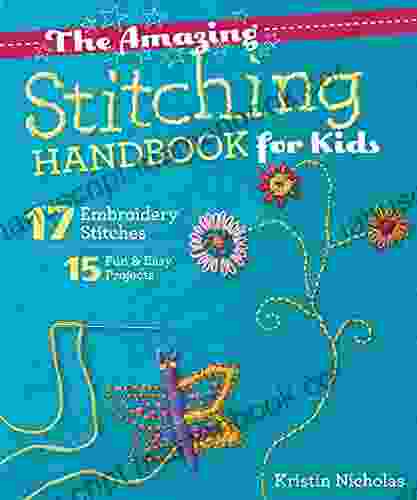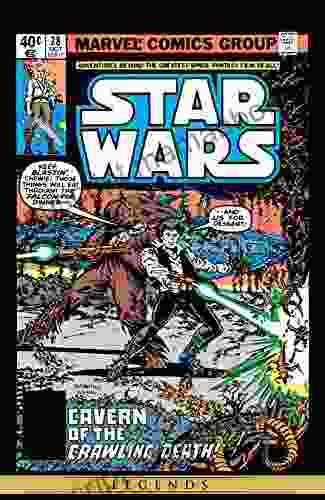17 Embroidery Stitches and 15 Fun and Easy Projects to Practice Them

4.7 out of 5
| Language | : | English |
| File size | : | 19173 KB |
| Text-to-Speech | : | Enabled |
| Screen Reader | : | Supported |
| Enhanced typesetting | : | Enabled |
| Word Wise | : | Enabled |
| Print length | : | 244 pages |
| Lending | : | Enabled |
Embroidery is a beautiful and versatile craft that can be used to create a wide variety of projects, from simple embellishments to elaborate works of art. It is a great way to relax and de-stress, and it can also be a very rewarding hobby. If you are new to embroidery, there are a few basic stitches that you will need to learn. Once you have mastered these stitches, you can start to experiment with different projects and create your own unique designs.
17 Basic Embroidery Stitches
- Running stitch: This is the most basic embroidery stitch and it is used to create a straight line. To make a running stitch, simply bring the needle up through the fabric from the back, and then insert it back down into the fabric a short distance away. Repeat this process until you have created a line of stitches.
- Backstitch: This stitch is used to create a stronger and more durable line than the running stitch. To make a backstitch, bring the needle up through the fabric from the back, and then insert it back down into the fabric a short distance away. Next, bring the needle back up through the fabric at the point where you started the stitch. Repeat this process until you have created a line of stitches.
- Stem stitch: This stitch is used to create a thick, raised line. To make a stem stitch, bring the needle up through the fabric from the back, and then insert it back down into the fabric a short distance away. Next, bring the needle back up through the fabric at the point where you started the stitch, but this time, insert it into the fabric a short distance to the side of the first stitch. Repeat this process until you have created a line of stitches.
- Satin stitch: This stitch is used to create a smooth, shiny surface. To make a satin stitch, bring the needle up through the fabric from the back, and then insert it back down into the fabric a short distance away. Next, bring the needle back up through the fabric at the point where you started the stitch, but this time, insert it into the fabric directly next to the first stitch. Repeat this process until you have created a line of stitches.
- Chain stitch: This stitch is used to create a delicate, airy effect. To make a chain stitch, bring the needle up through the fabric from the back, and then insert it back down into the fabric a short distance away. Next, bring the needle back up through the loop that you have created, and then insert it back down into the fabric a short distance to the side of the first stitch. Repeat this process until you have created a line of stitches.
- French knot: This stitch is used to create a small, raised knot. To make a French knot, bring the needle up through the fabric from the back, and then wrap the thread around the needle twice. Next, insert the needle back down into the fabric at the point where you started the stitch, and pull the thread through to create a knot. Repeat this process until you have created a line of stitches.
- Lazy daisy stitch: This stitch is used to create a small, delicate flower. To make a lazy daisy stitch, bring the needle up through the fabric from the back, and then insert it back down into the fabric a short distance away. Next, bring the needle back up through the fabric at the point where you started the stitch, and then insert it back down into the fabric a short distance to the side of the first stitch. Repeat this process four times to create a loop. Next, bring the needle back up through the fabric at the point where you started the stitch, and then insert it back down into the fabric in the center of the loop. Pull the thread through to create a knot and secure the flower.
- Bullion knot: This stitch is used to create a small, raised sphere. To make a bullion knot, bring the needle up through the fabric from the back, and then wrap the thread around the needle several times. Next, insert the needle back down into the fabric at the point where you started the stitch, and pull the thread through to create a knot. Repeat this process until you have created a small, raised sphere.
- Cast-on stitch: This stitch is used to create a decorative edge. To make a cast-on stitch, bring the needle up through the fabric from the back, and then insert it back down into the fabric a short distance away. Next, bring the needle back up through the fabric at the point where you started the stitch, and then insert it back down into the fabric a short distance to the side of the first stitch. Repeat this process until you have created a line of stitches.
- Cross-stitch: This stitch is used to create a variety of designs. To make a cross-stitch, bring the needle up through the fabric from the back, and then insert it back down into the fabric two squares away. Next, bring the needle back up through the fabric one square to the left of the first stitch, and then insert it back down into the fabric one square below the first stitch. Repeat this process to create a cross-stitch.
- Needlepoint: This stitch is used to create a variety of designs on canvas. To make a needlepoint stitch, bring the needle up through the canvas from the back, and then insert it back down into the canvas two squares away. Next, bring the needle back up through the canvas one square to the left of the first stitch, and then insert it back down into the canvas one square below the first stitch. Repeat this process to create a needlepoint stitch.
- Crewel embroidery: This stitch is used to create a variety of designs on fabric. To make a crewel embroidery stitch, bring the needle up through the fabric from the back, and then insert it back down into the fabric a short distance away. Next, bring the needle back up through the fabric at the point where you started the stitch, and then insert it back down into the fabric a short distance to the side of the first stitch. Repeat this process until you have created a line of stitches.
- Tambour embroidery: This stitch is used to create a variety of designs on fabric. To make a tambour embroidery stitch, bring the needle up through the fabric from the back, and then insert it back down into the fabric a short distance away. Next, bring the needle back up through the fabric at the point where you started the stitch, and then insert it back down into the fabric a short distance to the side of the first stitch. Repeat this process until you have created a line of stitches.
- Punch needle embroidery: This stitch is used to create a variety of designs on fabric. To make a punch needle embroidery stitch, bring the needle up through the fabric from the back, and then insert it back down into the fabric a short distance away. Next, bring the needle back up through the fabric at the point where you started the stitch, and then insert it back down into the fabric a short distance to the side of the first stitch. Repeat this process until you have created a line of stitches.
- Schiffli embroidery: This stitch is used to create a variety of designs on fabric. To make a schiffli embroidery stitch, bring the needle up through the fabric from the back, and then insert it back down into the fabric a short distance away. Next, bring the needle back up through the fabric at the point where you started the stitch, and then insert it back down into the fabric a short distance to the side of the first stitch. Repeat this process until you have created a line of stitches.
- Appliqué: This technique is used to add fabric to fabric. To appliqué, cut out a piece of fabric into the desired shape, and then sew it onto another piece of fabric. Appliqué can be used to create a variety of designs.
15 Fun and
4.7 out of 5
| Language | : | English |
| File size | : | 19173 KB |
| Text-to-Speech | : | Enabled |
| Screen Reader | : | Supported |
| Enhanced typesetting | : | Enabled |
| Word Wise | : | Enabled |
| Print length | : | 244 pages |
| Lending | : | Enabled |
Do you want to contribute by writing guest posts on this blog?
Please contact us and send us a resume of previous articles that you have written.
 Top Book
Top Book Novel
Novel Fiction
Fiction Nonfiction
Nonfiction Literature
Literature Paperback
Paperback Hardcover
Hardcover E-book
E-book Audiobook
Audiobook Bestseller
Bestseller Classic
Classic Mystery
Mystery Thriller
Thriller Romance
Romance Fantasy
Fantasy Science Fiction
Science Fiction Biography
Biography Memoir
Memoir Autobiography
Autobiography Poetry
Poetry Drama
Drama Historical Fiction
Historical Fiction Self-help
Self-help Young Adult
Young Adult Childrens Books
Childrens Books Graphic Novel
Graphic Novel Anthology
Anthology Series
Series Encyclopedia
Encyclopedia Reference
Reference Guidebook
Guidebook Textbook
Textbook Workbook
Workbook Journal
Journal Diary
Diary Manuscript
Manuscript Folio
Folio Pulp Fiction
Pulp Fiction Short Stories
Short Stories Fairy Tales
Fairy Tales Fables
Fables Mythology
Mythology Philosophy
Philosophy Religion
Religion Spirituality
Spirituality Essays
Essays Critique
Critique Commentary
Commentary Glossary
Glossary Bibliography
Bibliography Index
Index Table of Contents
Table of Contents Preface
Preface Introduction
Introduction Foreword
Foreword Afterword
Afterword Appendices
Appendices Annotations
Annotations Footnotes
Footnotes Epilogue
Epilogue Prologue
Prologue Edward Bellamy
Edward Bellamy J Bart Klika
J Bart Klika Crystal Parker Duffy
Crystal Parker Duffy John Wilker
John Wilker Guy Davenport
Guy Davenport Mark Russell
Mark Russell Indu Sundaresan
Indu Sundaresan Alan Taylor
Alan Taylor Kelly Cutrone
Kelly Cutrone Nurse Academy
Nurse Academy Clarence B Jones
Clarence B Jones James Mascia
James Mascia Kathleen Harryman
Kathleen Harryman Eric Raillard
Eric Raillard Giedre Rakauskaite Gie Dra
Giedre Rakauskaite Gie Dra Hupport
Hupport S D Sykes
S D Sykes Jerrold Mundis
Jerrold Mundis Carole Satyamurti
Carole Satyamurti Lana Popovic
Lana Popovic
Light bulbAdvertise smarter! Our strategic ad space ensures maximum exposure. Reserve your spot today!

 Ryūnosuke AkutagawaBlogging For Beginners: Basic Steps To Blogging For Profits - How To Make...
Ryūnosuke AkutagawaBlogging For Beginners: Basic Steps To Blogging For Profits - How To Make... Gary ReedFollow ·11.5k
Gary ReedFollow ·11.5k Eli BlairFollow ·19.9k
Eli BlairFollow ·19.9k Lucas ReedFollow ·14.4k
Lucas ReedFollow ·14.4k Michael SimmonsFollow ·3.4k
Michael SimmonsFollow ·3.4k David Foster WallaceFollow ·15.7k
David Foster WallaceFollow ·15.7k Edgar CoxFollow ·12.2k
Edgar CoxFollow ·12.2k Miguel de CervantesFollow ·9.8k
Miguel de CervantesFollow ·9.8k Carter HayesFollow ·5.5k
Carter HayesFollow ·5.5k

 Jaylen Mitchell
Jaylen MitchellPretime Piano Jazz Blues Primer Level: A Comprehensive...
The Pretime Piano...
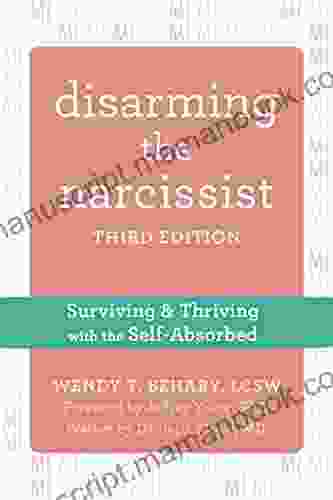
 Mark Twain
Mark TwainSurviving and Thriving with the Self-Absorbed: A...
Interacting with self-absorbed...
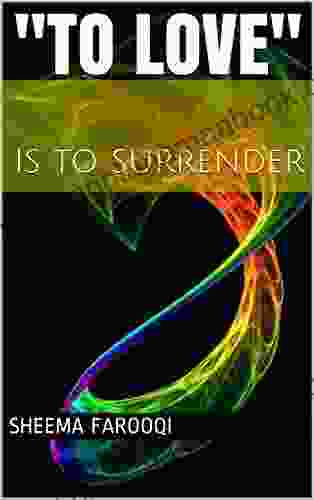
 John Keats
John KeatsTo Love Is To Surrender: A Deep Dive into the...
Surrender is one of the most enigmatic and...

 Steven Hayes
Steven HayesRich Murphy: A Visionary Engineer Shaping the Future of...
In the annals of space...
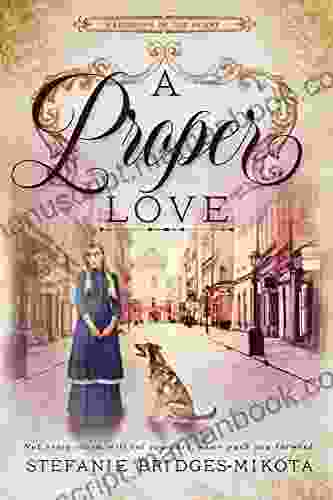
 Neil Parker
Neil ParkerProper Love: Navigating the Hardships of the Heart
Love is a beautiful emotion that can bring...
4.7 out of 5
| Language | : | English |
| File size | : | 19173 KB |
| Text-to-Speech | : | Enabled |
| Screen Reader | : | Supported |
| Enhanced typesetting | : | Enabled |
| Word Wise | : | Enabled |
| Print length | : | 244 pages |
| Lending | : | Enabled |


